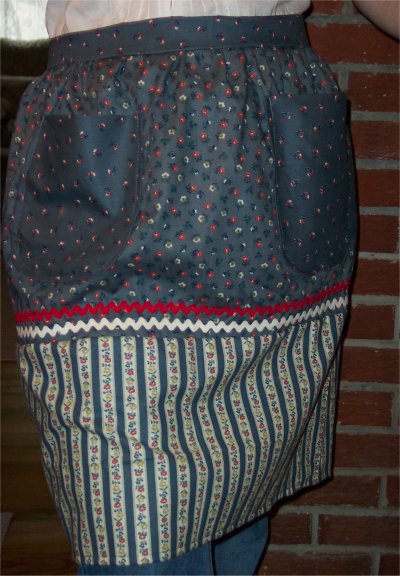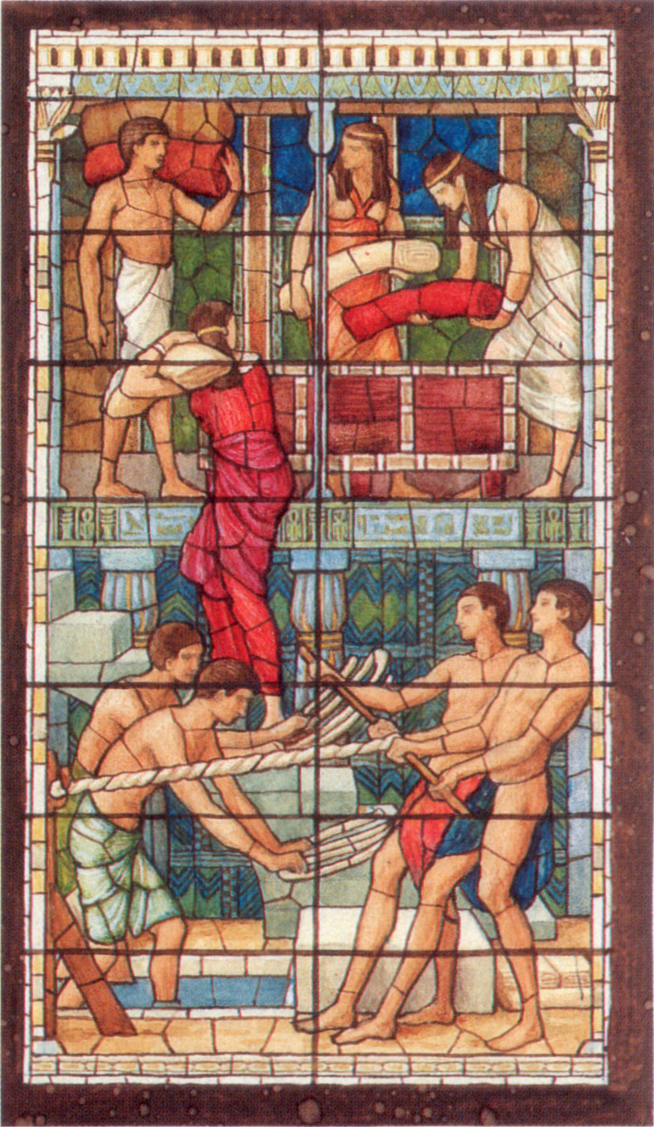|
Seminole Patchwork
Seminole patchwork, referred to by Seminole and Miccosukee women as Taweekaache (''design'' in the Mikasuki language), is a patchwork style made from piecing colorful strips of fabric in horizontal bands. Seminole patchwork garments are often trimmed with a rickrack border. Early examples of this technique are known from photographs in the 1910s, and its use by Seminole women in garment construction began to flourish in the 1920s. Seminole patchwork has historically been an important source of income for many Seminole women, and today remains a source of cultural pride. Fashion designers, including Donna Karan, have been criticized for their appropriation of this patchwork style. Gallery File:Seminole patchwork shawl.jpg, Seminole patchwork fringed dance shawl, ca. 1980s, by Susie Cypress (Seminole Tribe of Florida) from the Big Cypress Reservation, Florida File:Ruby Jumper Billie- Big Cypress Reservation, Florida (8790883947).jpg, Ruby Jumper Billie: Big Cypress Reservation, Flor ... [...More Info...] [...Related Items...] OR: [Wikipedia] [Google] [Baidu] |
Seminole
The Seminole are a Native American people who developed in Florida in the 18th century. Today, they live in Oklahoma and Florida, and comprise three federally recognized tribes: the Seminole Nation of Oklahoma, the Seminole Tribe of Florida, and the Miccosukee Tribe of Indians of Florida, as well as independent groups. The Seminole people emerged in a process of ethnogenesis from various Native American groups who settled in Spanish Florida beginning in the early 1700s, most significantly northern Muscogee Creeks from what is now Georgia and Alabama. The word "Seminole" is derived from the Muscogee word ''simanó-li''. This may have been adapted from the Spanish word ''cimarrón'', meaning "runaway" or "wild one". Seminole culture is largely derived from that of the Creek; the most important ceremony is the Green Corn Dance; other notable traditions include use of the black drink and ritual tobacco. As the Seminole adapted to Florida environs, they developed local traditions ... [...More Info...] [...Related Items...] OR: [Wikipedia] [Google] [Baidu] |
Miccosukee
The Miccosukee Tribe of Indians of Florida is a federally recognized Native American tribe in the U.S. state of Florida. They were part of the Seminole nation until the mid-20th century, when they organized as an independent tribe, receiving federal recognition in 1962. The Miccosukee speak the Mikasuki language, which is mutually intelligible with the Hitchiti language, is considered its dialect, and is also spoken by many Florida Seminole. Historically, the Miccosukee trace their origins to the Lower Chiaha, one of the tribes of the Creek Confederacy in present-day Georgia. Under pressure from European encroachment in their territory, they migrated to northern Florida in the early 18th century, where they became part of the developing Seminole nation.Pritzker, p. 390. By the late 18th century, the British recorded the name Miccosukee or Mikasuki as designating a Hitchiti-speaking group centered on the village of Miccosukee in the Florida Panhandle. Like other Seminole groups, ... [...More Info...] [...Related Items...] OR: [Wikipedia] [Google] [Baidu] |
Mikasuki Language
The Mikasuki, Hitchiti-Mikasuki, or Hitchiti language is a language or a pair of dialects or closely related languages that belong to the Muskogean languages family. Mikasuki was spoken by around 290 people in southern Florida. Along with the Cow Creek Seminole dialect of Muscogee, it is also known as Seminole. It is spoken by members of the Miccosukee tribe and of the Seminole Tribe of Florida. The extinct Hitchiti was a mutually intelligible dialect. Hitchiti was one of the many Muskogee languages spoken by tribes of the loose Muscogee Confederacy, and is considered by many scholars to be the ancestor of the Mikasuki language. It was spoken in Georgia and eastern Alabama in the early historic period, with speakers moving into Florida during the 18th and 19th centturies. Hitchiti was the language of tribal towns such as the Hitchiti, Chiaha, Oconee, Okmulgee, Sawokli, and Apalachicola. Based on the number of place names that have been derived from the language, scholars belie ... [...More Info...] [...Related Items...] OR: [Wikipedia] [Google] [Baidu] |
Patchwork
Patchwork or "pieced work" is a form of needlework that involves sewing together pieces of fabric into a larger design. The larger design is usually based on repeating patterns built up with different fabric shapes (which can be different colors). These shapes are carefully measured and cut, basic geometric shapes making them easy to piece together. Uses Patchwork is most often used to make quilts, but it can also be used to make rugs, bags, wall-hangings, warm jackets, cushion covers, skirts, waistcoats and other items of clothing. Some textile artists work with patchwork, often combining it with embroidery and other forms of stitchery. When used to make a quilt, this larger patchwork or pieced design becomes the "top" of a three-layered quilt, the middle layer being the batting and the bottom layer the backing. To keep the batting from shifting, a patchwork or pieced quilt is often quilted by hand or machine using a running stitch in order to outline the individual shap ... [...More Info...] [...Related Items...] OR: [Wikipedia] [Google] [Baidu] |
Rickrack
Rickrack is a flat piece of braided trim, shaped like a zigzag. It is used as a decorative element in clothes or curtains. Before the prevalence of sewing machines and overlockers, rickrack was used to provide a finished edge to fabric, and its popularity was in part due to its sturdiness and ability to stand up to harsh washing conditions. Rickrack is produced using a variety of fibers, including cotton, polyester, wool, and metallic fibers, and is sold in a variety of sizes and colors. Invented in the mid-19th century, it took its modern form and current name around 1880. Rickrack's popularity peaked in the 1970s and is associated with the ''Little House on the Prairie''. Several designs of formal and up-market girls' dresses with it on as a decoration became popular in the 1950s and 1960s. History In the 1860s, rickrack was known as waved crochet braid or waved lacet braid. During the 1890s, American home sewists used imported European rickrack as decorative edgings for ... [...More Info...] [...Related Items...] OR: [Wikipedia] [Google] [Baidu] |
Donna Karan
Donna Karan (, born Donna Ivy Faske), also known as "DK", is an American fashion designer and the creator of the Donna Karan New York and DKNY clothing labels. Early life Karan was born Donna Ivy Faske to mother Helen "Queenie" Faske (née Rabinowitz) and father Gabriel "Gabby" Faske (born Faskowitz) in the Forest Hills neighborhood of the Borough of Queens, New York City. Her family is Jewish. Karan's mother had been a model and had also worked in designer Chester Weinberg's showroom. Her father was a tailor and haberdasher who died when Donna was three years old. Karan and her older sister Gail were raised by their mother in Woodmere, in the Five Towns region of Nassau County, New York. Donna took pleasure in softball, volleyball, and basketball, cut classes in high school, and passed much of her time in the art department. She graduated from Hewlett High School in 1966, and then went to the Parsons School of Design. Career After leaving college, Karan worked for Anne Kle ... [...More Info...] [...Related Items...] OR: [Wikipedia] [Google] [Baidu] |
Iron Arrow Honor Society
The Iron Arrow Honor Society is an honor society at the University of Miami in Coral Gables, Florida for students, faculty, staff and alumni. It is the highest honor that can be bestowed by the university. Founded at the University of Miami in 1926, the society admits about thirty members annually, including Undergraduate education, undergraduate, University of Miami School of Law, School of Law and Leonard M. Miller School of Medicine, Miller School of Medicine students, alumni, and University of Miami faculty, staff, and administrators. Membership requires unanimous votes of the membership. Criteria include scholarship, leadership, Moral character, character, humility, and love of alma mater. History The society was founded in 1926 as the "Highest Honor Attained by Men." In 1937, Nu Kappa Tau, a separate sister organization at the university, was founded as "The Highest Honor Attained by Women." In 1966, Nu Kappa Tau became affiliated with the national honor society Mortar Boar ... [...More Info...] [...Related Items...] OR: [Wikipedia] [Google] [Baidu] |
Needlework
Needlework is decorative sewing and textile arts handicrafts. Anything that uses a needle for construction can be called needlework. Needlework may include related textile crafts such as crochet, worked with a hook, or tatting, worked with a shuttle. Similar abilities often transfer well between different varieties of needlework, such as fine motor skill and knowledge of textile fibers. Some of the same tools may be used in several different varieties of needlework. According to the ''Ladies' Needlework Penny Magazine'': There are many women who persuade themselves that the occupations particularly allotted to their sex are extremely frivolous; but it is one of the common errors of a depraved taste to confound simplicity with frivolity. The use of the needle is simple, but not frivolous. Background Needlework was an important fact of women's identity during the Victorian age, including embroidery, netting, knitting, crochet, and Berlin wool work. A growing middle class ... [...More Info...] [...Related Items...] OR: [Wikipedia] [Google] [Baidu] |
Textile Techniques
Textile is an umbrella term that includes various fiber-based materials, including fibers, yarns, filaments, threads, different fabric types, etc. At first, the word "textiles" only referred to woven fabrics. However, weaving is not the only manufacturing method, and many other methods were later developed to form textile structures based on their intended use. Knitting and Nonwoven, non-woven are other popular types of fabric manufacturing. In the contemporary world, textiles satisfy the material needs for versatile applications, from simple daily clothing to Bulletproof vest, bulletproof jackets, spacesuits, and Medical gown, doctor's gowns. Textiles are divided into two groups: Domestic purposes [consumer textiles] and technical textiles. In consumer textiles, Aesthetics (textile), aesthetics and Textile performance#Comfort, comfort are the most important factors, but in technical textiles, Textile performance#Properties, functional properties are the priority. Geotex ... [...More Info...] [...Related Items...] OR: [Wikipedia] [Google] [Baidu] |
Textile Arts
Textile arts are arts and crafts that use plant, animal, or synthetic fibers to construct practical or decorative objects. Textiles have been a fundamental part of human life since the beginning of civilization. The methods and materials used to make them have expanded enormously, while the functions of textiles have remained the same, there are many functions for textiles. Whether it be clothing or something decorative for the house/shelter. The history of textile arts is also the history of international trade. Tyrian purple dye was an important trade good in the ancient Mediterranean. The Silk Road brought Chinese silk to India, Africa, and Europe, and, conversely, Sogdian silk to China. Tastes for imported luxury fabrics led to sumptuary laws during the Middle Ages and Renaissance. The Industrial Revolution was shaped largely by innovation in textiles technology: the cotton gin, the spinning jenny, and the power loom mechanized production and led to the Luddite rebel ... [...More Info...] [...Related Items...] OR: [Wikipedia] [Google] [Baidu] |


.jpg)


